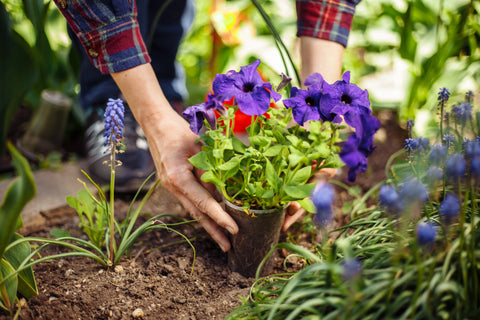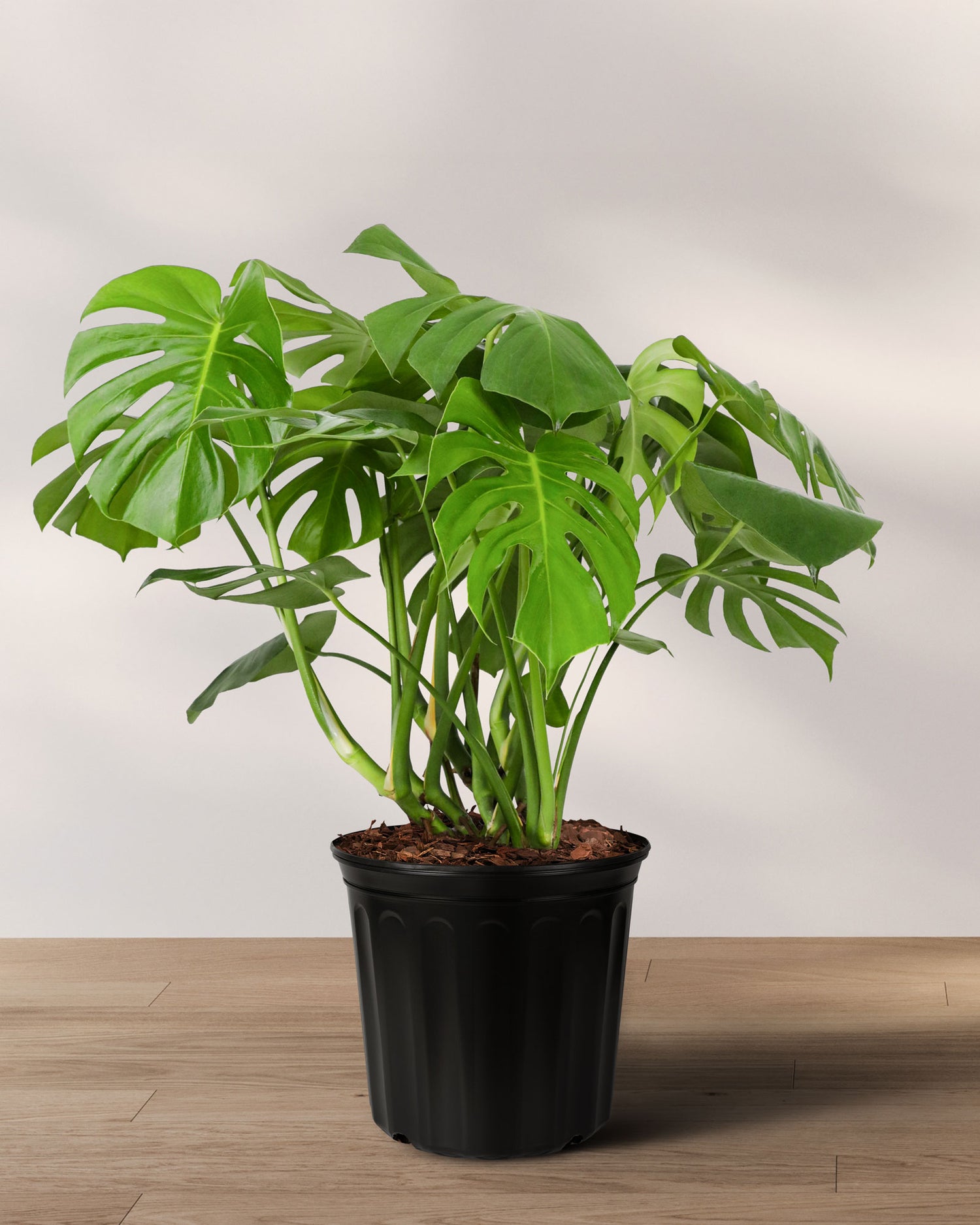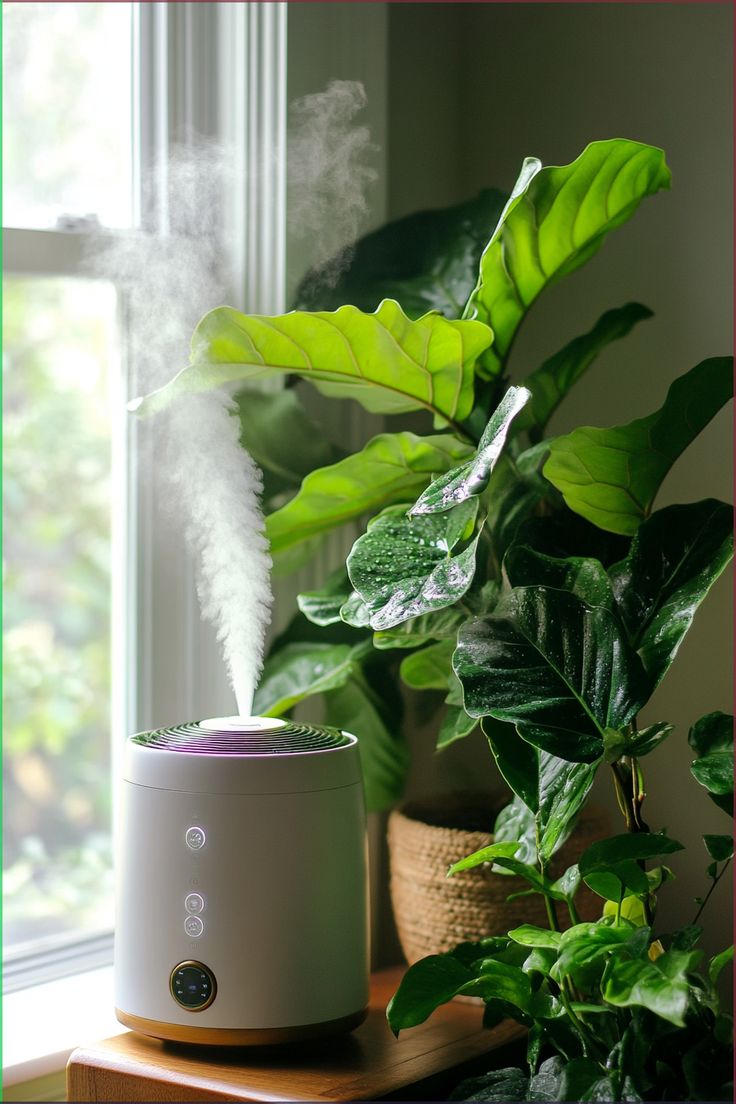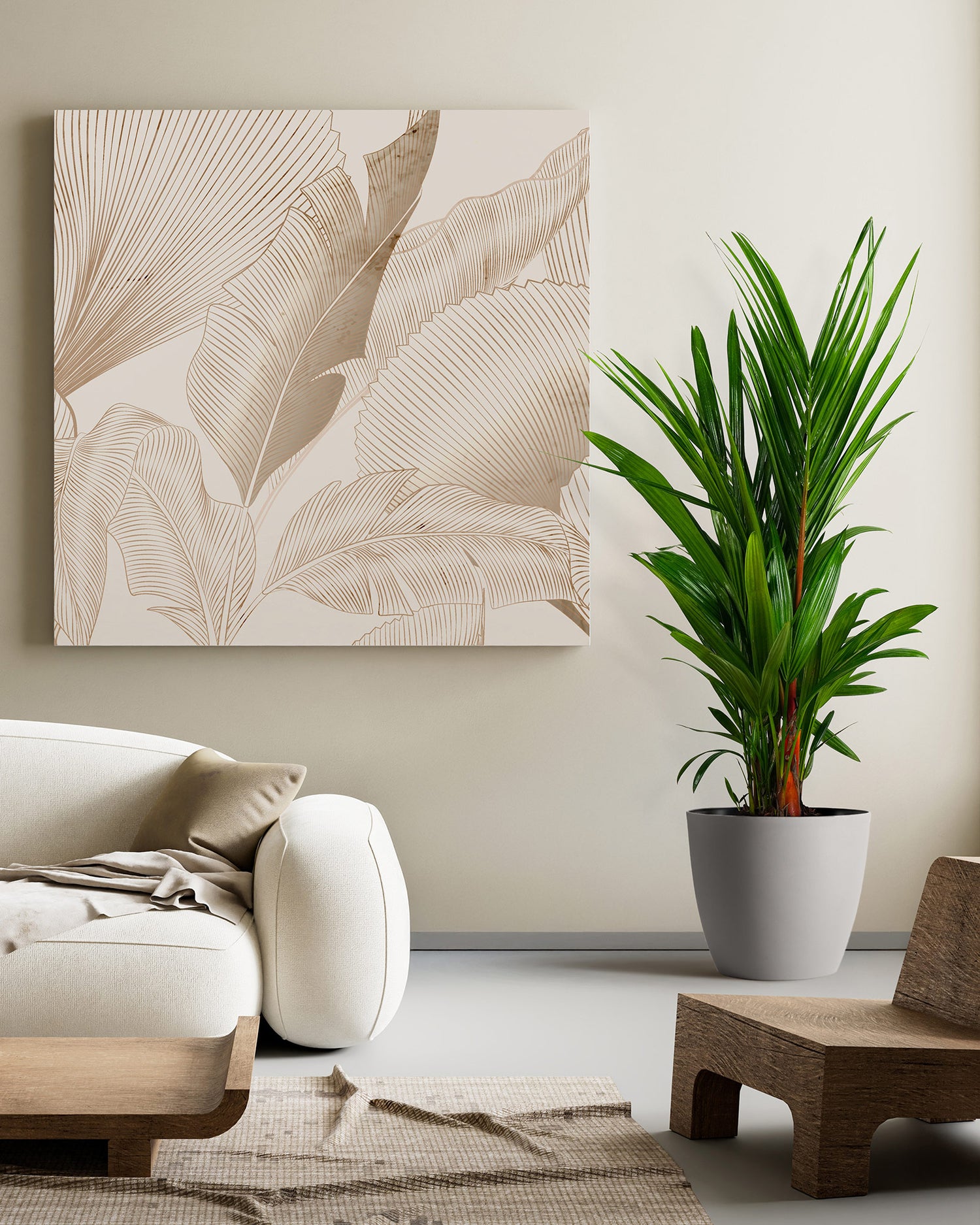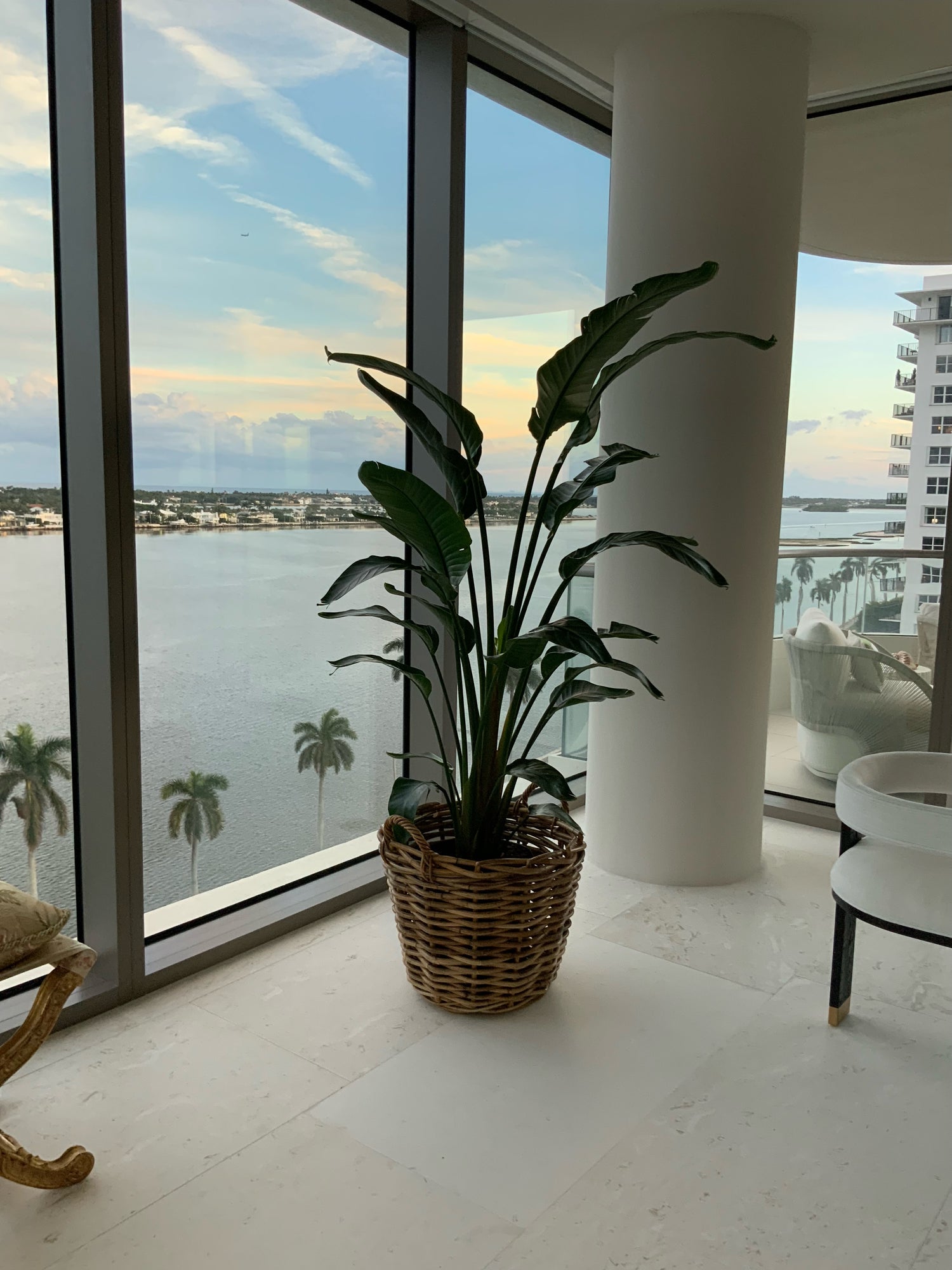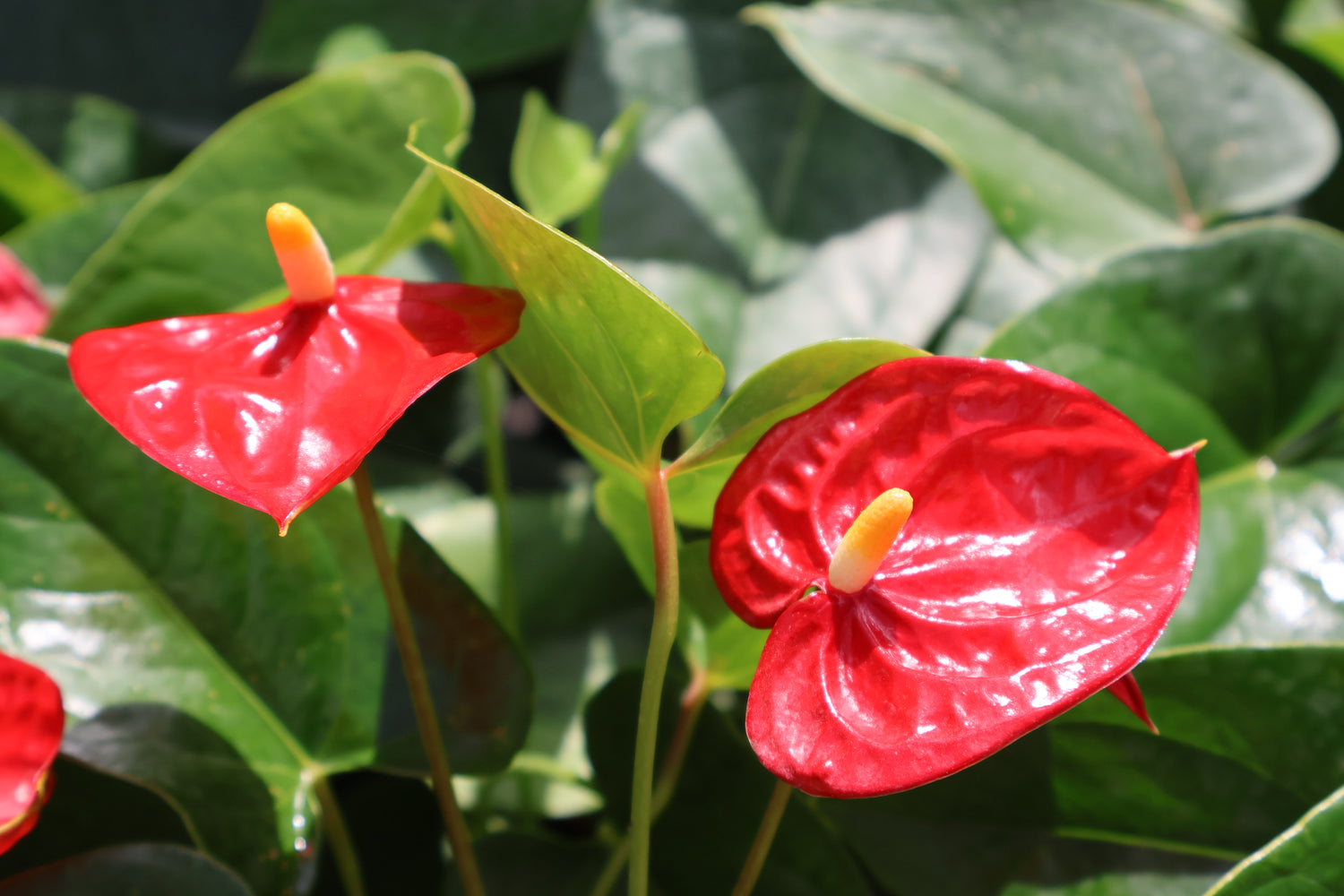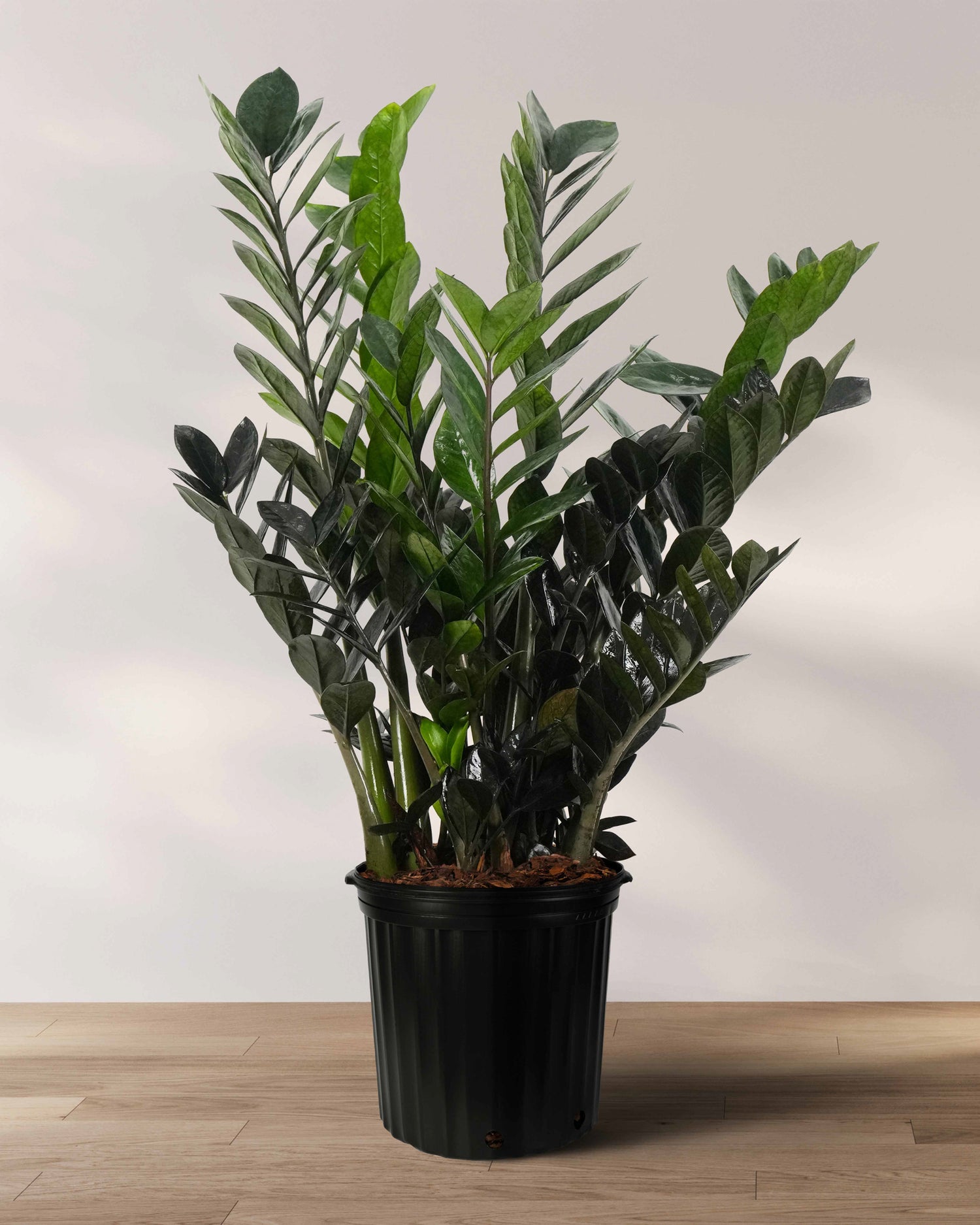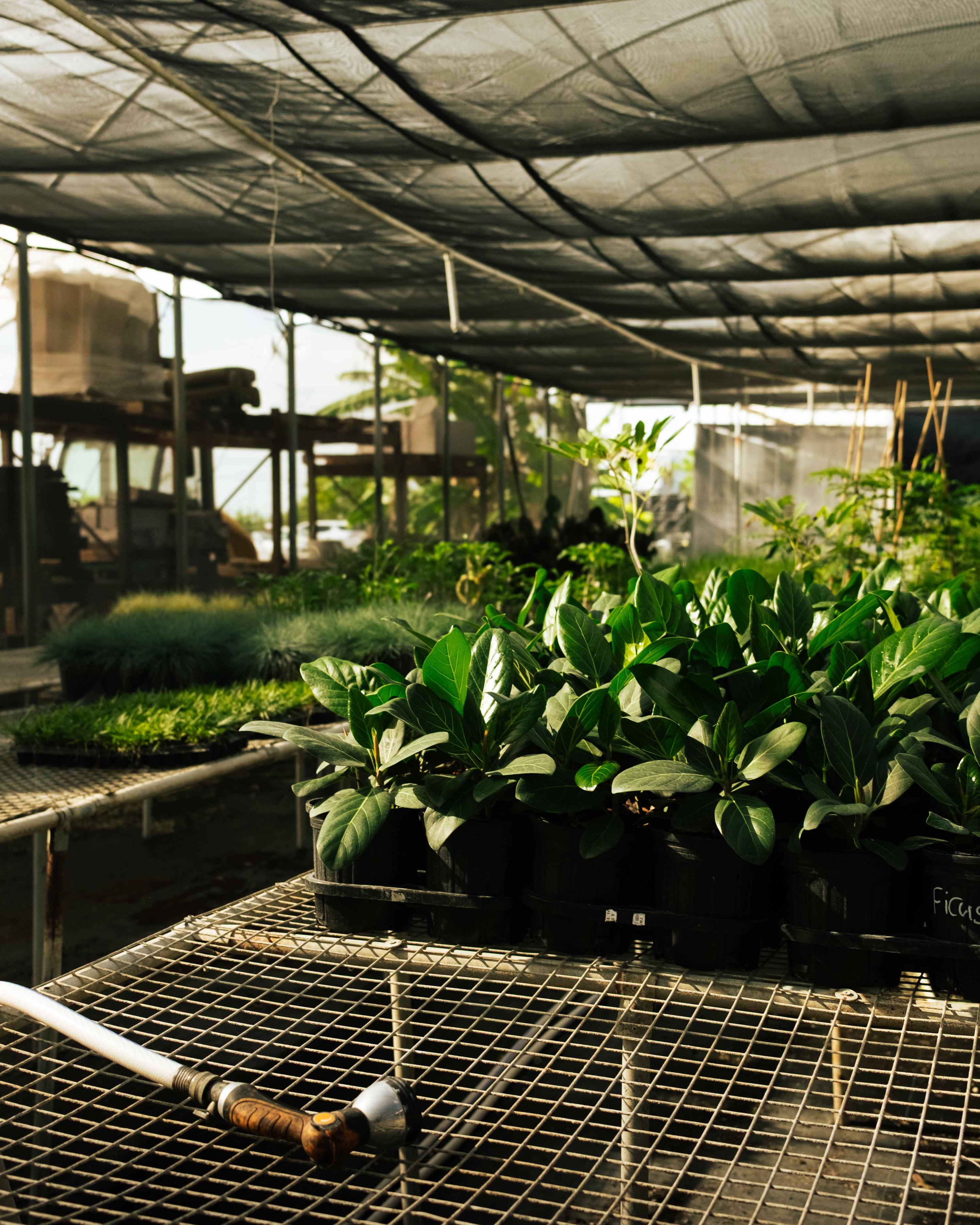Find the Best Spot for Light
During winter, sunlight is minimal, so it's important to utilize what little light is available. On sunny winter days, open the curtains and pull the houseplants close to the windows to enjoy the limited light. The best windows to consider are south-facing, as they are the most lit during the day.
Grow lights would suffice for plants that need extra help. Supplemental lighting and bright indirect light are best for Fiddle Leaf Figs, Monstera, and Rubber Plants. Dust off leaves as dirt can block light absorption and limit the plant's ability to create energy through photosynthesis.
Pro Tip: Rotate your plants every few days so all sides have equal exposure to sunlight.


